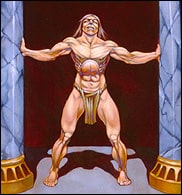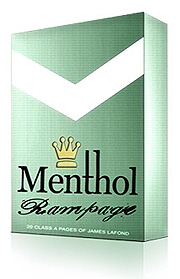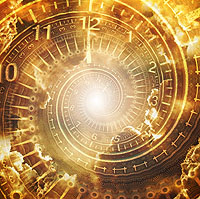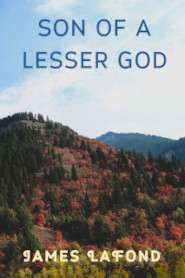His Take
Having seen the shade of Mary Shelly behind the likes of Bram Stoker, H.G. Wells, and Gene Wolfe [the modern sci-fi writer who comes closest to Mary’s level of introspective characterization], I thought Victoria and I should develop a specific model for discussing Mary Shelley’s landmark novel. Victoria and I will be tackling the review of Frankenstein as a team, dividing the duties along the lines of our strengths, in hopes of doing Frankenstein justice.
In my two previous reads of Frankenstein I found myself struggling to enjoy it. This had to do with my impatience with epistolary narrative, and the handling of the monster’s perspective. Readers generally enjoy Frankenstein far more than I. However, I retain a great interest in the novel, the author having successfully stricken a number of cords within me despite my dislike of the narrative style she employed.
The majority of the literature I review is nonfiction. I shall therefore review Frankenstein as a work of allegorical philosophy, along the way setting the historical and climatic stage for the author’s inspiration.
Victoria is better placed to speak for Mary’s perspective as a female novelist and a member of an intense literary circle. Also, in light of the fact that Victoria’s current Tau 4 Series parallels the science-fiction aspects pioneered in Frankenstein, I am far more interested in her take on the Frankenstein monster and his creator, than mine.
Frankenstein, Or The Modern Prometheus
1816, Mary Wollstonecraft Shelley
‘The Modern Prometheus’
In fiction, few subtitles have been so indicative of the content as The Modern Prometheus. With these three words Mary managed to question the industrial transformation of a world that had just undergone a protracted manmade tragedy in the form of the Napoleonic Wars, from 1803 to 1815.
Never before had European battlefields seen such carnage. The bones of horses and men at many battle sites lay so thick that they were mined as mineral deposits for decades to come. Total war had come to Russia, and to Spain, where the British were deeply immersed in a campaign as nasty as modern U.S. involvement in Vietnam and Afghanistan. The British people even lost their greatest celebrity and national hero, Lord Horatio Nelson, which would have been analogous to Brad Pitt being killed defending the Eastern American Seaboard against a fleet of Islamist invaders. The war is also significant, in that the seed for Frankenstein was born among fellow writers in Switzerland, a vacation that would not have been likely before 1816, a year of significance.
The titan [elder god] of Greek mythology, who made man from clay and gave him the secret of fire and the spark to develop technology, was Prometheus. The name may be translated as ‘foresight’ or as ‘first-lord’. He was punished by Zeus [chief of the new gods] for this transgression by being bound to a rock, whereupon the eagle of Zeus would come to feast on his regenerative liver [thought to be the seat of emotion] daily. Taken in this light Frankenstein is analogous to Prometheus, his monster analogous to man and his monstrous acts, with Zeus representative of the old world order threatened by the tragic wonder of a manmade intelligence. This theme has haunted us modern people since Mary penned it, and remains the central pillar of science-fiction literature, and often the subject of philosophic and political debate.
‘A Cold Northern Breeze’
The first letter of the narrative is dated December 11th, 17-, and is addressed to Mrs. Saville, by her brother, embarking on a polar adventure from Saint Petersburgh, [sic] Russia. The icy climate and the dread of the cold, and of the mystery of the North Pole, which man was not to reach for generations, were the subject of this thick atmospheric passage. The letter is chock full of the denial of dread, and an insistence on seeking ‘a country of eternal light’ despite the threat of winter.
As a reader this first letter imbued me with a yearning for this story that still persists even though I ultimately did not care for the manner of its telling. Mary puts the dread of winter into the reader’s mind and at the same time projects hope for tomorrow. It was no accident that Mary conceived of and completed Frankenstein, in 1816, a year alternately remembered as ‘the year without a summer’ and ‘eighteen hundred and starve to death’. The eruption of Mount Tambora on the rim of the Indian Ocean, a year earlier, had girded the world in a gray cloudbank, causing crop failures, famine, bankruptcy, and migration across Europe and North America. The meteorology behind that blustery year would not be understood for nearly a century.
The effect however, on the imagination of a person of Mary’s class, must have been great. Britain was the one superpower in a world recently transformed by a global war, and increasingly, industry. Educated people of the minor nobility in this age, when the merchant class was increasingly dominating economics, tended to make it their business to increase the mental frontiers of mankind, just as the merchants and military adventurers increased the material and physical boundaries of their world. A brand of deist Christianity with strong metaphysical and scientific overtones infused the thinkers of the day. Readers and writers in general where very much obsessed with where mankind was going as a creature who was still generally thought to be a divinely created image of divinity, unhappily burdened with some glaring flaws.
‘Disturbed, With Profane Fingers’
The portrait of Frankenstein which emerges through his recollections of the making of his creature cast a brilliant image of obsession in the mind’s eye of the reader. Mary must certainly have known an obsessed man or two in her life, to have penned such a deeply textured narrative of a man’s potential for dynamic fixation at her young age. Before, during and after his work of profane creation Frankenstein admits to his sin against nature. Ironically, much of what is wrong with the creature is due—like an abused child—to the negative image of him held by his parent. Frankenstein hates that which he has wrought, much like man, striving to better his material lot, dislikes the lost aesthetic of the resulting world.
Concerning the longevity of her work, I believe Mary’s keenest decision as a writer, was to avoid discussion of the specific means of creation employed by her protagonist. This was accomplished easily enough by having the learned madman relate the process to a person ignorant of the sciences, and therefore not likely to comprehend the methodology. Mary, not an alchemist or anatomist, and knowing intuitively that the means of making a man were beyond present technology, did not try to concoct something that would become laughable to later generations.
This very type of oblique reference to technologies beyond the means of the author’s time has been neatly continued by such authors as Gene Wolfe. Unfortunately, many 20th Century science-fiction writers ignored Mary’s example, and their works shall not enjoy the long-lived interest and repeated reinvention and adaptation Frankenstein has enjoyed. It is no accident that interest in Mary Shelley’s Frankenstein took off again after World War I, which was an event that mirrored the Napoleonic Wars with its unprecedented and horrific industrial scale, and the deep physical and psychological scars etched on the post war population. That fact that Mary left the means of the creature’s generation to the imagination of future readers has done much to insure her novel’s continued adaptation.
In the end, what really strikes me as the key behind the continued wonder that we are able to muster for a nearly 200 year old story, is that Frankenstein was written by and for a thinking person caught up in rapidly changing times; times of war, and times of inventive avarice.
‘Man’s yesterday may ne-er be like his morrow;
Naught may endure but mutability!’
-Chapter 10, paragraph 4, verse
Her Take
THE TEARS OF TWO
Mary Wollstonecraft Shelley’s FRANKENSTEIN: THE NEW PROMETHEUS, reviewed by V.J. WAKS
Very shortly, yet another invocation of a classic tale of horror and fantasy will launch—I, FRANKENSTEIN. Only the latest in a dozen or so renditions, this new film reboot from the production team that brought us UNDERWORLD will undoubtedly prove fairly Goth, fairly violent, fairly in your face. It is based upon a graphic novel—the creature becomes involved in a war between two immortal clans in an ancient city.
Say what?
Mary Shelley created the original; she would likely be as curious and as appalled as we potentially are to be. For this is a serious departure from the themes of the novel that exploded on the scene in 1818. The young woman who originated a franchise that has spanned nearly two centuries was yet a teenager when she began her fateful liaison with Percy Shelley, then married. A little traveling in France brought Mary home (despite the presence of a chaperone) pregnant by him. The infant died early; the couple faced nothing but ostracism and because of this—poverty. Percy’s wife would shortly thereafter commit suicide and Mary married her mentor.
Shelley would prove to be only the first—not long after the marriage, the still impressionable young woman had the fortune or misfortune to travel with her husband in the company of a man whose genius was equal to his notoriety—Lord Byron—and during this trip, the seeds of FRANKENSTEIN were sown. Tragedy struck again; more of Mary’s children died, her husband drowned in a sailing accident in 1822.
Mary Shelley was now 24 years old and had lived more than a lifetime of soul searing events. She herself would die young from a brain tumor at age 53.
Let’s look at context; Pride and Prejudice would come out in 1813, the Bonaparte family would be exiled from France around this time, DRACULA would shock the world by 1897. It is extremely difficult to provide a review for the extraordinary material in FRANKENSTEIN and still keep true to the sensibility of 19th Century life in which it was created. It is hard to provide some kind of benchmark in comparisons to what we, in this modern, technology heavy age—consider horror fantasy.
Shelley wasn’t writing drawing room dramas like Austen; she was living them. Yes, the writer was cultured, educated and moved in circles that would likely vacation in Geneva. But Mary’s relationships with the men in her life are what set her apart, both aiding and conflicting her progress as a writer. Young, married and thunderstruck by the genius and power of two strong males, Byron and her husband—all of this played a major role in her style and abilities. It is interesting to wonder what she would have done had she not stood in the shadows of these men (important to note that she also produced an apocalyptic novel about a planet ravaged by plague). Forget her style in this early work, which is dated in spots and profoundly slows the story, making us long for what she doesn’t explore. Forget the lack of science—she cleverly couches Victor Frankenstein’s fascination with alchemy and the forgotten wisdom of the ancients directly into the story as a fudge factor. Forget the entire second act of the book during which she takes long steps backward in style, pace and action, leaning on her own persona as a young woman at the expense of the story telling and the progress of the tale. Mary’s voices do not change with her characters, not as they should (as in the case of Stoker’s masterpiece DRACULA). What we have here is the work of a very young woman, a very young writer.
What we also have here is perhaps the very first time in modern literature of an examination—and judgment—of what science potentially can and should be to the common man. This is considered by many to be the first science-fiction; as such, it merits a close look. Here, the issue of the morality of creation is right on the page for us to see—to compare with our own. We wish she had gone further in this; she was limited by her very sex, her upbringing, her life with two intense, overpowering visionaries right in her own creative back yard. We want her to really explore this man, this creator named Victor Frankenstein, a man who should have known better, who had a duty to perform—and the creature he so irresponsibly brings to life.
For what kind of life is it?
Victor Frankenstein does nothing to help his creation; the creature is forced to flee, abandoned, and make its own way in a world that is horrified by its simple appearance. This creation learns language, strength, and resourcefulness—despite its solitary existence and the ostracism of society. This is a tale of narcissism and here we see the ghost of Byron—Victor never assumes any responsibility for his work, he never can perceive much from a view other than his own and at the last, is resolutely determined to be innocent of any crime, moral or otherwise. Frankenstein refers to his Adam as a monster, long before that son proves himself capable of murder and vengeance. And when his creation demands that the scientist create a mate to appease his intolerable loneliness and isolation, all Victor can think about is a race born into malice. Shelley here presages the fears of the modern world when anomalous life forms may be created. It is a question in many minds; I myself tread lightly on that very thin ice in my sci-fi series TAU4—and I still don’t have an answer. Why does Frankenstein have not a trace of compassion—what should have been his response to this creature? What should be ours?
Think of the Elephant Man, and his compassion. Think of Erik, not in the musical but in the novel PHANTOM OF THE OPERA, horribly disfigured, with his desperate need for the kind of life—and love—he cannot have, and his terrible vengeance on all the world above.
What if we looked like that?
What Mary Shelley does is raise questions that we still struggle with today. We have seen this monster countless times, visually since the films of the 30’s, when a brilliant artist named Boris Karloff created a character not seen since the days of Lon Chaney, Sr. We have seen this monster morph through genres to our present day. Time after time, we are moved—not only to wonder but to mercy by the story, by a creature living as the ultimate of society’s outcasts. And we judge, not only the creation—but the one who should have done better—the creator.
The final chapter is horrific, heart-breaking. Here we see the bereft—the lost, lost unutterably to all hope and all redemption. Here we see hate set against vengeance, as creator seeks the death of the creation, as nightmare becomes finally real in the novel. The nightmare is not in the creation of the new life form—it is in the terrible drama they play out together, man and monster, man and man. Do not read this last chapter at night, alone, in a dark room. You will not sleep easily or well afterward; here in the last chapter is the miracle of what Shelley accomplished—the heart of true science-fiction, the soul of true horror.
Afterword
Victoria and I wait to read each other’s work until after we send our respective portions to one another. After reading her take, I think we ought to take a look at that post apocalyptic novel that Mary wrote later in life.











Anyone picking up this book anew, I'd suggest finding a copy with the beautiful illustrations by Bernie Wrightson. You can see some of his work for the novel here:
scans-daily.dreamwidth.org/903607.html
IMO, his visual interpretation is unparalleled.
Thanks, and please give us a heads up in the future concerning any notable illustrated editions.
"I think we ought to take a look at that post apocalyptic novel that Mary wrote later in life"
Please do . I implore you. Unlike Frankenstein I have not been able to enjoy this novel. Maybe your thoughts on it will persuade me to give another try.
James and Victoria this is a beautiful analysis on Frankenstein. I especially liked the historical contexts that you provided.
I have always been of the opinion that Frankenstein did not left his creation because it was hideous or inhuman but because he regretted the time he lost. The time which he could have spent with his family. I am not saying what he did was right. In fact throughout the story I rooted for the monster.
A rare book collector I know is looking for a hard copy of Mary's later works for me. I write dystopian literature, so will definitely give this title a read.
Akshat, your observations as to Frankenstein's true resentment of the monster make sense in light of some of the comments Victoria made to me over the phone concerning Mary's own life and it's tragic aspects. I, personally, as a reader rather than as a reviewer, have always found Mary to be more interesting than her seminal literary creation.
Thank you, Akshat, for the input.